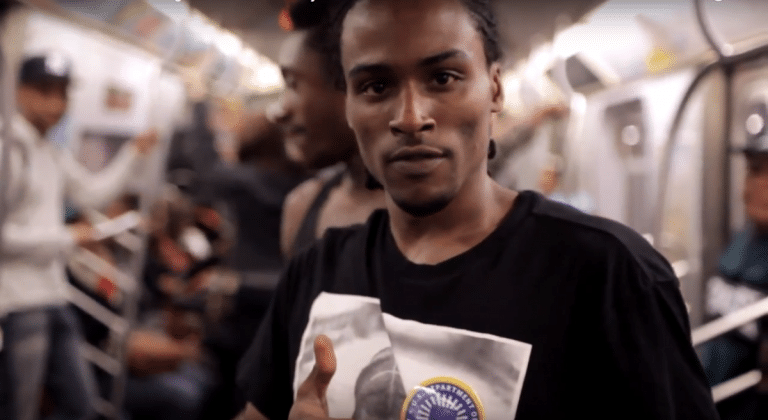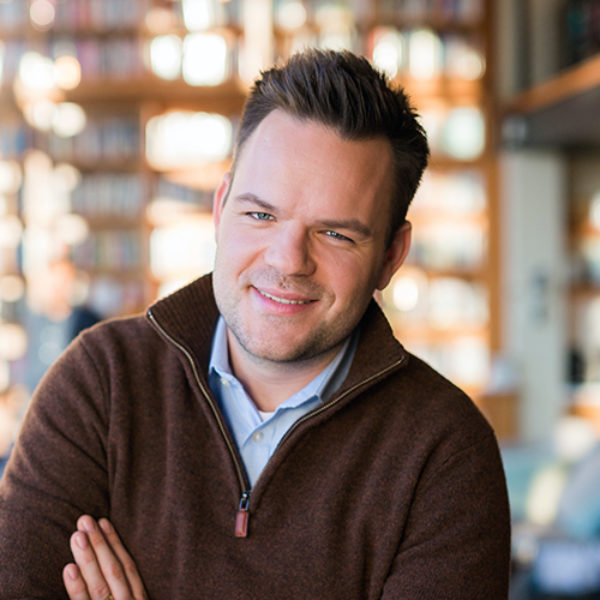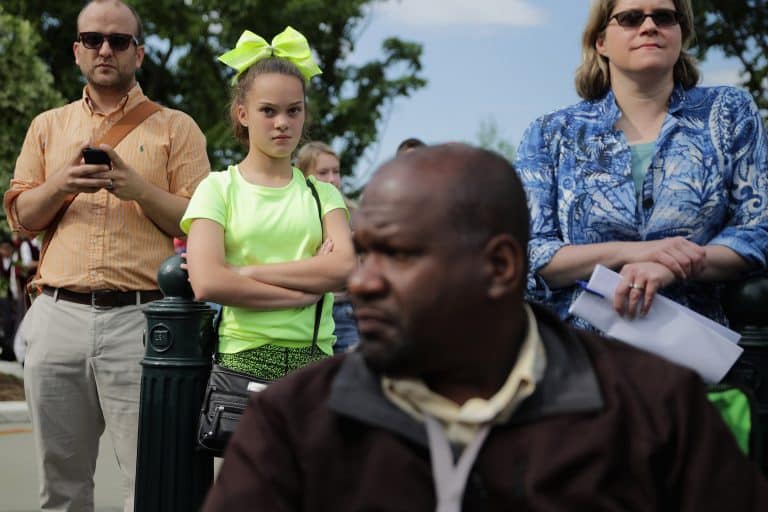
Image by USDAC.
The Power of Imagination to Reshape Our Politics
The act of imagining alternatives is perhaps the most powerful gift we have to give.
Just by imagining other possibilities we question the status quo. And in a time when so many of our existing institutions are struggling, this capacity to imagine is a necessary step in creating something new. At least, this is the rationale of the the U.S. Department of Arts and Culture (USDAC), who in this election season have helped us imagine alternatives as to how we can engage our communities politically.
With only one week to go before Election Day, wherever you are in America you’ll find lawn signs emblazoned with the names of hopeful political candidates as you stroll through your neighborhood. But in St. Louis, Missouri, you might see an unusual collection of signs promoting values such as joy, effort, and respect instead of candidates’ names and slogans.
The LawnCare Campaign is the brainchild of Sarah Bernhardt, an organizer with the USDAC. Despite its name, the USDAC is not a government agency, but rather an act of collective imagination. Adam Horowitz — whose job title as “chief instigator” at the USDAC reveals the lack of governmental drudgery — describes it as a people-powered department, a grassroots action network inciting creativity and social imagination to shape a culture of empathy, equity, and belonging.
Indeed, anyone who wants to be part of the USDAC can be, by hosting one of their civic actions. The network of artists and activists who founded the USDAC believed in the power of creativity and imagination to reshape the politics and policies of the United States. As they write,
“To create a just and welcoming world, all of us need social imagination, the capacity to envision and enact change. Yet as a society, we’ve failed to prioritize the programs and policies that cultivate creativity, empathy, and collaboration. Social institutions seldom allow us to show up as whole, creative humans. Too often, the stories we’re asked to accept limit possibility, depicting us only as consumers and workers rather than creators and communicators.”
On the ground in St. Louis, those lofty ideals were embodied as Sarah and her co-leader got together in a park and screen-printed yard signs with young people and families to infuse their neighborhoods with the qualities that they see as integral to a healthy community. A small action in the face of relentless TV ads and a 24-hour news cycle, but as Horowitz explains,
“The gesture may be small, but to those who perform it, it’s an important and empowering step toward reclaiming democratic participation.”
For these Missouri teens and children, practicing participation meant not only sharing their voice, but having it heard in public.
In an election season that has been notable for its nastiness, the USDAC-hosted civic conversations show us a way to engage one another in our nation’s most complex questions that doesn’t end in hurling hurtful words across the dinner table, or un-friending one another online. Dispersed in towns large and small, creative and playful, open to young and old alike, these imaginative actions remind us that citizenship is about so much more than voting alone.
Indeed, if we look at our seasonal cycle of elections, midterms, and legislative sessions through the lens of religious practice, there is a bona fide civic liturgical calendar! The USDAC has not been shy to make the most of that. Since January 2014, citizen artists around the country have hosted People’s State of the Union events, where story circles are formed in libraries, community centers, and people’s homes so that rather than simply listening to the Presidential address, individuals can share their own perspective on the state of the union. These stories are noted down and collected by a group of poets who then, in turn, create an hour-long poetic address to the nation which is broadcast back to all the participants of the small groups. Horowitz explains that this is fitting for a State of the Union event because, after all, “democracy is a conversation, not a monologue.”
Just as we connected The Dinner Party’s ability to break open the cultural taboo of grief to Walter Brueggemann’s much-loved theological work The Prophetic Imagination, so too the USDAC unleashes our civic imagination, which is needed to invert seemingly immovable structures of power and oppression. The biblical scholar writes,
“[T]he imagination must come before the implementation. Our culture is competent to implement almost anything and to imagine almost nothing. The same [dominant] consciousness that makes it possible to implement anything and everything is the one that shrinks imagination because imagination is a danger. Thus every totalitarian regime is frightened of the artist. It is the vocation of the prophet to keep alive the ministry of imagination, to keep on conjuring and proposing alternative futures to the single one the king wants to urge as the only thinkable one.”
Every totalitarian regime, every seemingly immovable structure of power is afraid of the artist. The citizen who imagines alternatives has perhaps the most powerful instrument for change.
Might we then accept that those few lawn signs in Missouri aren’t simply amusing commentaries on an election gone on too long, or the embittered tone between two rival parties — but, instead, that they are prophetic statements about a world we can but barely imagine?
“It is the task of prophetic imagination to bring people to engage the promise of newness,” writes Brueggemann. There is a newness waiting for us. What might it be?
This is an act of collective imagination, Horowitz tells us. So join in and add yours.
How We Gather
»Part 1: The Theology of CrossFit
» Part 2: SoulCycle as Soul Sanctuary
» Part 3: The Dinner Party
» Part 4: Becoming Our Aspirational Selves


Share your reflection